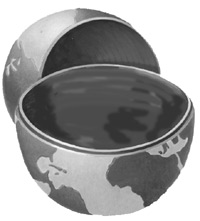


Prentice Hall and Sun Microsystems. Personal use only; do not redistribute.
144
Chapter 7 Generating the Server Response: HTTP Response Headers
the header value. As with setting status codes, you must specify headers
before returning the actual document. With servlets version 2.1, this means
that you must set the headers before the first use of the
PrintWriter
or raw
OutputStream
that transmits the document content. With servlets version
2.2 (the version in J2EE), the
PrintWriter
may use a buffer, so you can set
headers until the first time the buffer is flushed. See Section 6.1 (Specifying
Status Codes) for details.
Core Approach
Be sure to set response headers before sending any document content to
the client.
In addition to the general purpose
setHeader
method,
HttpServlet
Response
also has two specialized methods to set headers that contain dates
and integers:
setDateHeader(String header, long milliseconds)
This method saves you the trouble of translating a Java date in
milliseconds since 1970 (as returned by
System.currentTimeMillis
,
Date.getTime
, or
Calendar.getTimeInMillis
) into a GMT time string.
setIntHeader(String header, int headerValue)
This method spares you the minor inconvenience of converting
an
int
to a
String
before inserting it into a header.
HTTP allows multiple occurrences of the same header name, and you
sometimes want to add a new header rather than replace any existing header
with the same name. For example, it is quite common to have multiple
Accept
and
Set Cookie
headers that specify different supported MIME
types and different cookies, respectively. With servlets version 2.1,
set
Header
,
setDateHeader
and
setIntHeader
always add new headers, so
there is no way to unset headers that were set earlier (e.g., by an inherited
method). With servlets version 2.2,
setHeader
,
setDateHeader
, and
setIntHeader
replace any existing headers of the same name, whereas
addHeader
,
addDateHeader
, and
addIntHeader
add a header regardless of
whether a header of that name already exists. If it matters to you whether a
specific header has already been set, use
containsHeader
to check.
Finally,
HttpServletResponse
also supplies a number of convenience
methods for specifying common headers. These methods are summarized as
follows.
Second edition of this book: www.coreservlets.com; Sequel: www.moreservlets.com.
Servlet and JSP training courses by book's author: courses.coreservlets.com.
footer
Our partners:
PHP: Hypertext Preprocessor Best Web Hosting
Java Web Hosting
Jsp Web Hosting
Cheapest Web Hosting
Visionwebhosting.net Business web hosting division of Web
Design Plus. All rights reserved



